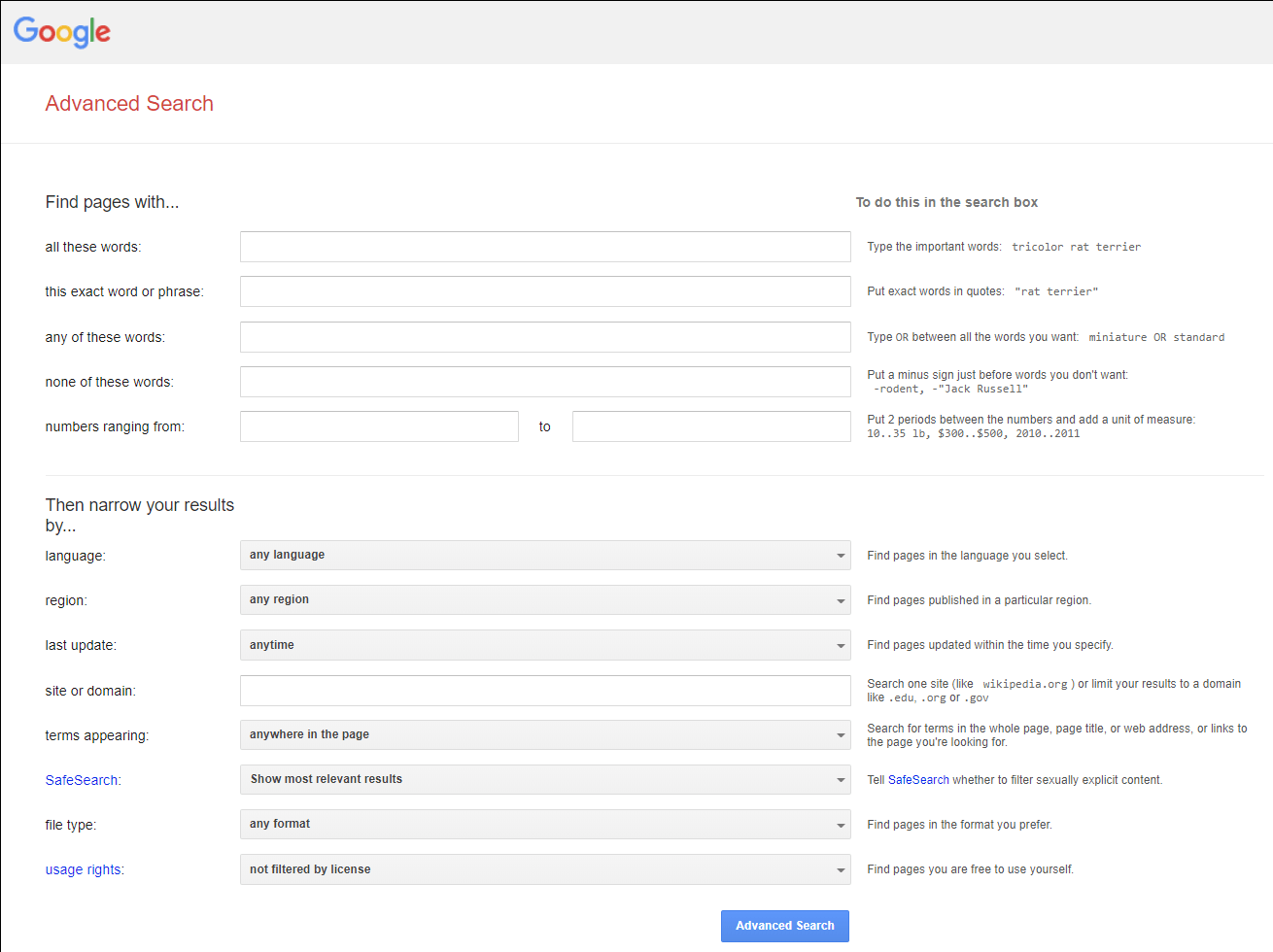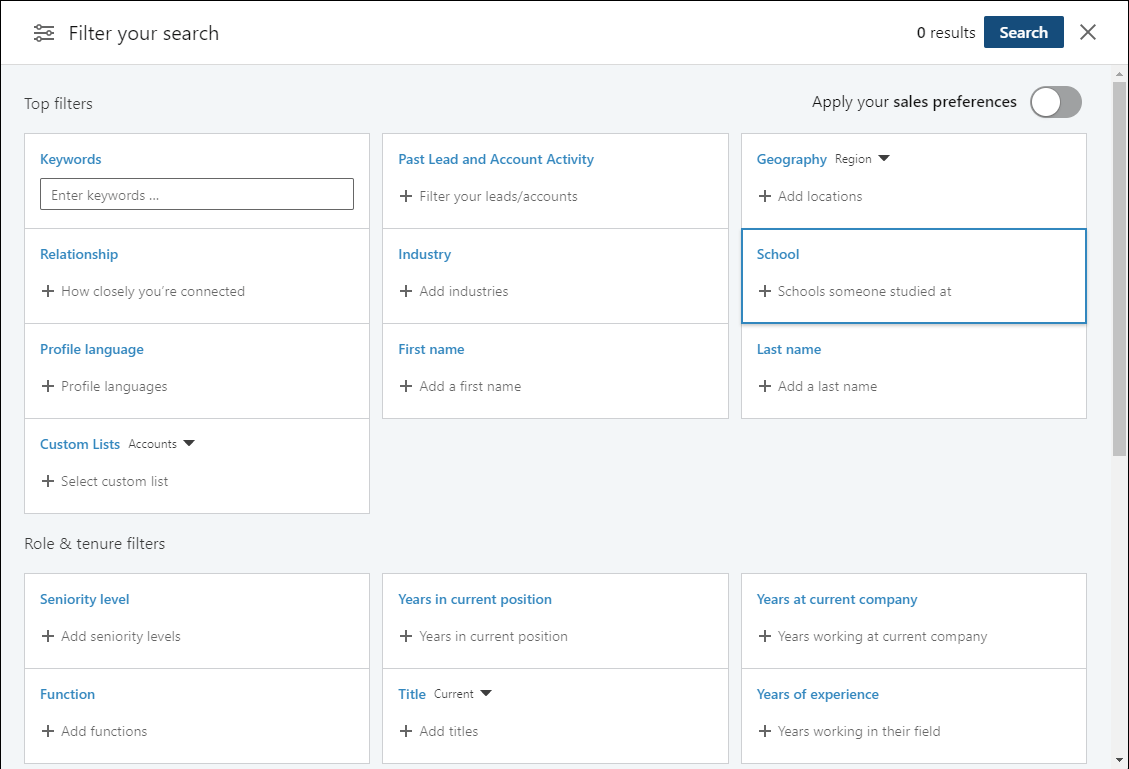The Ultimate Guide to Starting and Building Your Consulting Business
Strategies, Tactics, and Tools to
Help You Build a Thriving Consulting Business
Getting Consulting Clients Quickly
Return to top: Ultimate Guide to Starting a Consulting Business
“Filling the Pipeline” is arguably the most important thing a consultant can do next to delivering successful consulting services.
If you start your consulting business with just referrals you will soon face the dreaded “Feast-or-Famine” cycle that most new consultants face in their first year. This cycle has you jumping back and forth between working with clients and making money to working on marketing and prospecting and not making money. It can become a vicious and exhausting cycle if you don't learn how to create a "client getting system."
There is a whole smorgasbord of methods for filling your prospect pipeline. Whichever style you prefer, writing, speaking, or networking, there are well-defined methods you can build into a pipeline-filling system. No matter which method you use for filling your pipeline, you must create a consistent, reproducible system you continue to use.
You Must Either Devote Constant Work to Getting New Clients or Develop a
"Client Getting System" that Brings Clients to You
What may be the scariest moment for most consultants is actually “closing a client.” Asking someone to hire you feels like you are forcing them to make a judgment about your value and pushing them to spend money. It’s a terrible feeling – unless you remember the real purpose behind your consulting.
Closing a client doesn’t have to be hard, uncomfortable work. You need to remember two things. First, your purpose is to heal their pain. Second, ask them questions that lead them to knowing you can help them. Just use your natural consulting skills of questioning to lead a prospect into asking you, “When can you start?”
The Ultimate Guide to Starting and Building a
Thriving Consulting Business
Get Your Free Copy
115-pages of Strategies, Tactics, and Tips to
Accelerate Your Consulting Business
To create a successful consulting business you must know how to get consulting clients quickly and consistently.
New consultants usually start their first year with client referrals that carry them through the first year. Then referrals begin to disappear, and so does income. For the vast majority of consultants it is very difficult to depend upon referrals.
You must build a system that fills your pipeline with qualified prospects you can turn into clients.
Consultants who don't use a proven system
to fill their prospect pipeline have massive revenue problems.
Consultants that depend upon the referrals they get in their first year usually fall into a Feast-or-Famine cycle. In a Feast-or-Famine cycle, consultants work long hours with clients and have no time for marketing. Then, when the client engagement ends, they face long stretches with no income as they work on stop-gap marketing. It’s a continuous cycle that drives consultants and their families crazy.
Getting out of this Feast-or-Famine cycle, and building steady growth is key to a successful consulting business.
In this stage, you learn about short term techniques to quickly fill your pipeline and convert prospects into clients.
These techniques fill the pipeline, but they take constant work, and you don’t want to be on this treadmill constantly. Once you have a couple of clients, start building the systems in Stage 5, Marketing Your Consulting Services.
The Feast-or-Famine Cycle
New consultants often start with referrals from friends, business acquaintances, and their previous employer. These referrals often fade after the first year, so new consultants find themselves facing months of no revenue.

Most consultants, even experienced consultants, have faced the Feast-or-Famine cycle. The Feast-or-Famine cycle swings you back and forth between high income and no income. The cycle alternates between all work and no marketing, and all marketing and no work. Of course, income follows the same cycle leaving most consultants yearning for stability and pushing them into accepting low paying work from low-quality clients.
"Client Getting Techniques" can fill your pipeline,
but using using these alone will throw you back into the
Feast-or-Famine cycle.
To thrive, you must create a marketing machine
like those in Stage 8, Automating Marketing.
You don’t have to go through this Feast-or-Famine cycle. By spending 10% to 30% of your time using the techniques describe for this stage, you can fill your prospect pipeline. Once you have two or three clients, begin building the marketing systems in Stage 8 to continuously fill your pipeline.
Start Networking Now
Before you start your consulting business, you should build your LinkedIn network with quality contacts. Contacts you connect with should be people you would want to work with or who work in the organizations you want to consult to.
To build your LinkedIn network connect with,
- Work colleagues
- People at meetup groups in your field
- People at industry association meetings in your niche
- People in LinkedIn groups you join
- Conference speakers and attendees
Matching Your Marketing to Your Experience
Before you run out into the street and start wildly marketing your consulting business, stop and think about how you like to work, how you like to connect with people, and how your prospects like their communication.
All those need to come together when you build your marketing plan. You want to,
- Do the type of marketing work you like, for example, speaking vs. writing
- Connect with people the way you prefer, for example, private meetings vs large networking events
- Know how most of your prospects get information and connections they trust, for example, referrals vs. online articles
The Marketing Matrix can help you identify your best way of filling your pipeline and nurturing leads into prospects. If you are just starting your consulting business choose marketing methods in the first column. If you have a running consulting business or are looking to the long term choose from the second or third columns.
Check the marketing that works best for your stage of consulting business maturity.

Do Marketing You Love, So You Love to Do Marketing
If you read about the differences between high earning solo professionals and average earners you learned that high earners,
- Market constantly. High earners are marketing every day. (That’s marketing, not selling.)
- High earners don’t spread themselves thin. Pick three types of marketing you like and stick with them.
- High earners keep marketing even when they have clients.
If you stop marketing as soon as you get clients, you will fall into the dreaded Feast-or-Famine cycle. You must keep marketing.
If you are going to work consistently on marketing, you want to do marketing that works and that you enjoy. That’s why you need to pick just two or three types of marketing that use work styles you enjoy.
For example,
- If you like writing, you will probably want to write blogs, LinkedIn posts and articles, white papers and case studies. Some of these give long term results, but white papers and case studies can be combined with networking to give immediate results.
- If you like planning and creating systems, then make checklists, workflow diagrams, systems designs, or mind maps to connect with your prospects.
- If you enjoy meeting new people, then go to Meetups and networking events. Follow up with coffees and high-value handouts.
- If you get a kick out of speaking to groups, (I do even though I’m an introvert), then speak at local association monthly meetings or Meetups.
- If you enjoy teaching, do small pre- or post-workshops before conferences. Always have a high-value follow-up that gives you a reason to reconnect with attendees.
- If you work with leadership or skills-based consulting, then call local companies and talk to their HR or training and development department and setup free “lunch and learns” where they supply the lunch, people and a room and you do a small workshop.
Getting Consulting Clients Quickly
There are marketing and direct outreach techniques that quickly bring in clients. While these work I have found they take a lot of time and energy. That can be hard to keep up and it takes away from your consulting and personal time.
The following section describes marketing methods that are known for quickly filling your prospect pipeline. What follows is an overview. For step-by-step action plans there details in the Starting and Building a Thriving Consulting Business courses and blogs.
While the following are some of the fastest methods for filling your prospect pipeline they require constant personal attention and hours of work. To build a marketing machine that works automatically make sure you read Stage 8, Automating your Marketing.
Client Referrals
Most new consultants begin their practice with a few referrals. However, these usually dry up within the first year.
If you have been an employee you should try to make a mutually beneficial referral arrangement with your past employer. In some cases, you can continue to support your old employer’s customers and clients for everyone’s benefit.
- Some of the referral building tasks you need to do when starting are,
- Get recommendations on LinkedIn from past managers and acquaintances.
- Build a working relationship with your past employer by supporting their business rather than competing with them.
- Write email templates you can send to your professional acquaintances so they can easily refer you to their business acquaintances. (The course includes sample templates.)
Network and Meetup Events
You CANNOT sit back and rest even if you have the benefit of starting with a full pipeline. If you have startup momentum from referrals, then use that momentum and the time it gives you to network and to start building your automated marketing machine.

Here are a few tips on networking,
- Work on the “That’s what I do.” introduction from Stage 3. It works.
- Build your network with high-quality connections in your niche as rapidly as possible. Use the energy that comes from being a new solopreneur to start your network.
- Add old connections to your LinkedIn network and stay in touch.
- Let people in your network know that you are starting a consulting business. Write them a short personal note and send an email explaining the types of problems you solve.
- Join professional organizations and go to all the meetings to build your network. Join only the organizations that build skills you need and connect you to people with your ideal Client Profile.
Some associations won’t let you speak unless you are a member or a recognized expert with books and a national speaking background.
Direct Outreach with LinkedIn
Building your prospect list is significantly easier when you have a large number of quality LinkedIn 1st degree contacts. For example, at one point I had 1,000 1st degree connections. That created a network of over 3,000,000 (three million) 1st, 2nd, and 3rd degree connections that I could search, connect with, and engage.
LinkedIn and especially LinkedIn Sales Navigator are like the Google of professional and business people. They are a goldmine of professional connections.
If you didn’t do the Client Profile exercise in Stage 2, go back and do it. You have to use a consistent system with LinkedIn to test which profiles are best. Searching with different client profiles and not testing which profile gives you the best prospects is a waste of time.
One new consultant in the Starting a Consulting Business course increased their LinkedIn acceptance rate by 400% with a minor change in the Client Profile.
If you do not have a large personal LinkedIn network, practice using the free LinkedIn and then when you are ready, get a month-by-month subscription to LinkedIn Navigator. Use it long enough to build an initial prospect list.
Create the best LinkedIn connection requests by connecting with some form of personal relationship or an exchange of value. Connecting and building rapport by creating a high-value exchange on LinkedIn is critical. We do a lot of work on this in the Starting and Building a Thriving Consulting Business course.

DO NOT SELL on LinkedIn! You hate spam emails and phone calls and so does everyone else. Spam LinkedIn messages are just as annoying.
LinkedIn activity can be slow. Many people only go on LinkedIn once or twice per month so you may not see responses for a week or more.
Don’t be discouraged by a 10% to 20% connection acceptance rate. Once you have a great LinkedIn profile, published LinkedIn content, and have built a brand from speaking or writing, your acceptance rate should be over 50%.
Find Your Ideal Client Profile then Connect, Engage, and Nurture
Here's a proven process for connecting on LinkedIn,
- Prove Your Client Profile Against Your Real-World Network.
Meet real people at association and networking events and connect with them on LinkedIn. Would you have found them using your Client Profile to search LinkedIn or Google? - Create a High-Value Offer You Can Send People.
Build a high-value offer like a trouble-shooting guide, white paper, workflow diagram, etc. that you can forward to new connections. You won’t be forwarding it immediately. - Search LinkedIn and Google.
Use your client profile as search criteria. In LinkedIn use the Advanced Search box. In Google use the Advanced Search Page.
The Critical to Success courses teach how to use Boolean search strings to make very refined searches.
Google Advanced Search Box

LinkedIn Navigator Advanced Search Box

- Send a Connection Request to Five to 20 People per Day.
Be honest and tell them you are in the same business and want to build your network. As an expert, you would like to send them information that may help them in their business. If you have a real common connection, like the same college, hometown, sports interest, then bring it up. - Send Requests on Tuesday, Wednesday, or Thursday between 11:00 AM and 2:00 PM at the Recipient’s Time. These are the most common times people check LinkedIn; however, some people only check LinkedIn weekly.
Never Use Connection Request Software on LinkedIn!
LinkedIn detects when you use software that “scrapes” prospect
names from LinkedIn and then sends a mass of connection requests.
LinkedIn Will Ban You!
- When someone accepts your connection request, send them a thank you.
Wait a day or two, then send them your high-value piece. (You must know what the most common pains and problems your clients have.) - If you are a student of the Starting and Building a Thriving Consulting Business course, use the scripts and templates to accelerate your work.
- Wait another week and send them a link to a critical high-value article that might be of value to them.
It often takes multiple messages to engage with someone. - Once you begin a conversation, ask if you can exchange emails since emails are easier to use than LinkedIn messages. If you have started an email newsletter, ask if they would like to get your newsletter.
- Send a message to your LinkedIn connections asking to meet at local association meetings, dinners, or events.
- Keep connecting on a weekly or bi-weekly basis. Some people may take months to connect with you. Some will connect when they need your help.
DON’T TRY TO SELL. Just try to connect, engage, and build rapport.
Webinars, Workshops, and Lunch-and-Learns
Workshops and lunch-and-learn sessions are an excellent way to build your prospect list. They give you the chance to demonstrate your consulting ability, engage with attendees, and build rapport and build a mailing list by offering additional post-workshop material.
Again, this is where you must know the key pains and problems of your Client Profile. You want a workshop with a title and pin-point solution that your audience can’t ignore.
In all three of these, you must create offers so that prospects want to reengage with you one-on-one afterward. That will build your email list and personal connections.

Webinars
Webinars can be almost as good as real-world workshops. But, they take more work to build rapport. The key here is to engage the audience with the chat sidebar and give the audience workbook exercises. If you just talk you will lose your audience.
Webinars work well in participation with companies or associations.
I’ve used many different webinar platforms, but I prefer Zoom for its quality, low-cost, and ease-of-use.
Workshops
If you have an idea for a good one to three hour-long workshop, approach the organizers of an industry event and ask if you can do a pre- or post-event workshop. You will need to give the organizers a white paper, testimonials, sample worksheets and an outline. If you have a video of you speaking, put it on YouTube and send them the link. Always have an irresistible offer for attendees so they will connect with you afterward.
A good way to engage with a small group in a workshop or Lunch-and-Learn is to end the workshop or Lunch-and-Learn with a brainstorming session on how the learnings can be applied when they return to work. This is a great time for you to learn about client needs and pain.
Workshops and Lunch-and-Learns are a great time for you
to learn client needs
and for attendees to see you in action.
Lunch-and-Learns
Lunch-and-Learns are a little different than workshops. Lunch-and-Learns were a staple in building my first computer training and consulting business.
Lunch-and-Learns work best for skills-based training where the sponsoring company supplies lunch and you bring the workshop material. Besides computer skills, these also work well for management and leadership scenarios and training.
I've earned numerous large clients by doing free Lunch-and-Learns with niche groups like the finance department or digital marketers. After one or two L-n-N's they usually suggest on-going consulting or training.
Speaking
Speaking, when done with the right structure and offers, is an excellent way to capture leads and prospects.
One significant advantage to selecting the right niche market and knowing their pains and gains is that most high-value niches have professional meetings or conferences. These meetings and conferences are a perfect place for you to present, build your brand, and gather leads.

When you present to a meeting or conference, you have two objectives.
First, you want to be recognized as a captivating expert who helps your audience learn and advance. This will also get you rebooked for more speaking.
Second, you want to capture leads to build your consulting business. Capturing leads as a speaker takes a few extra tricks that we cover in our courses.
Even a great speech can leave you with no leads.
You must use a speech structure that generates desire and captures leads.
Even a speech that garners standing ovations can leave you with no leads. To get leads you must structure your speech with prompts that build desire, have a Call to Action, and drive attendees to contact you. We go through this speech protocol in the course.
One consultant who took the How to Start a Consulting Business course is highly qualified. She has a Ph.D. in her niche and is a successful speaker. Although a good speaker, she rarely got leads.
She turned that around when she started using the speaking protocol that drives an audience to become leads. In her next speech, she got seven leads.
Return to top: Ultimate Guide to Starting a Consulting Business
The Ultimate Guide to Starting and Building a
Thriving Consulting Business
Get Your Free Copy
115-pages of Strategies, Tactics, and Tips to
Accelerate Your Consulting Business

